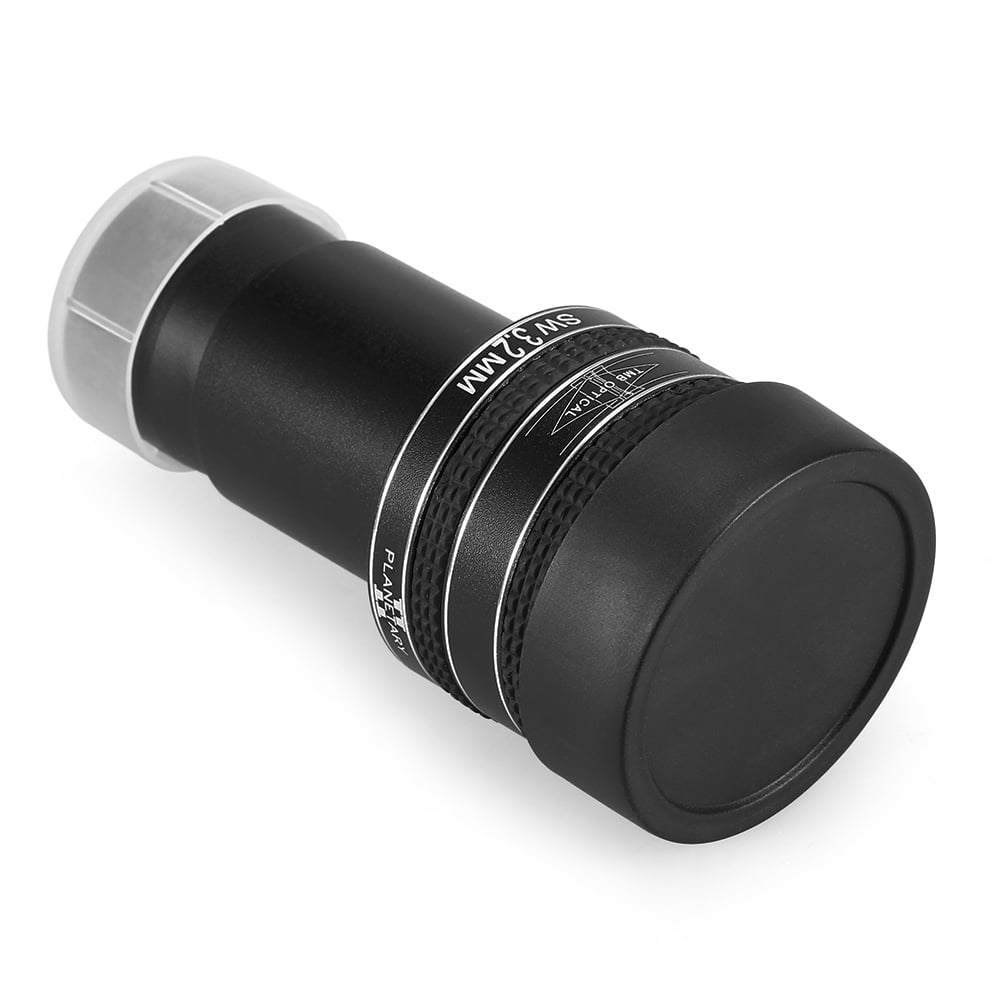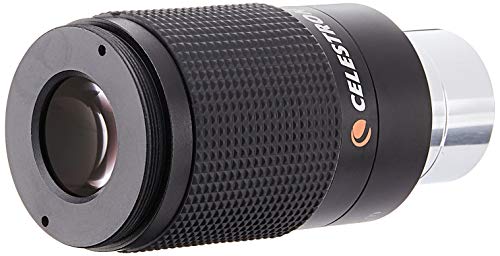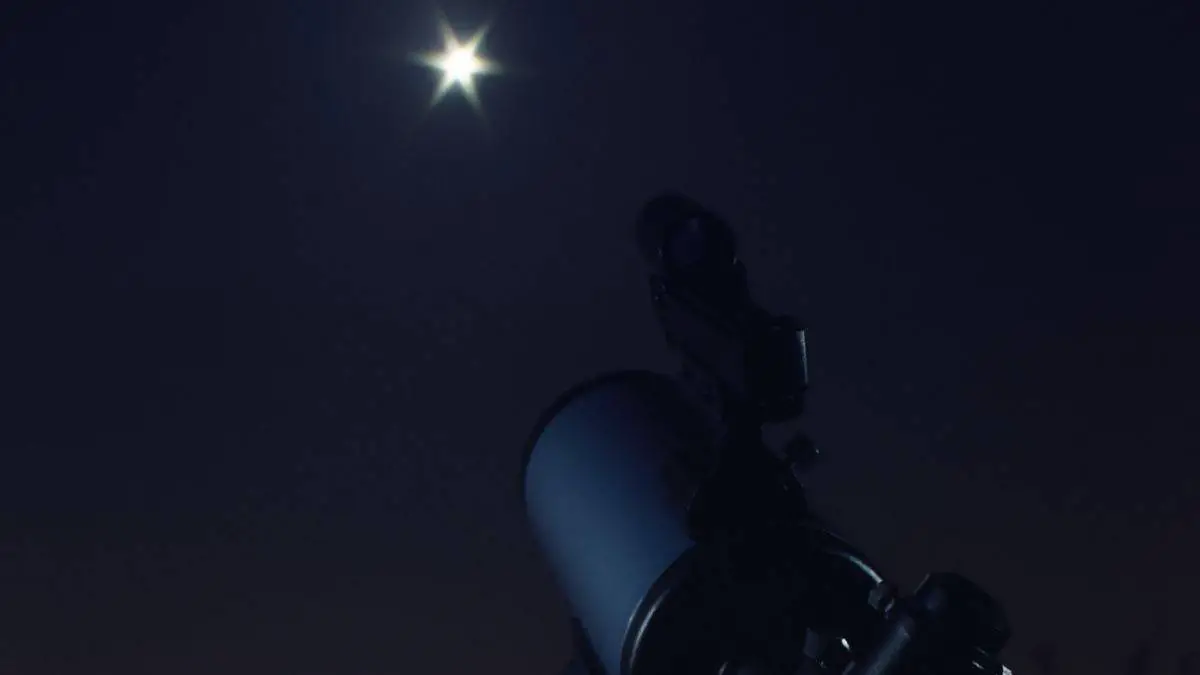Best Telescope Eyepieces for Viewing Planets [Top 8 Picks for 2024]
A lot of astronomers underestimate the value of a good eyepiece. Finding the right one for your target can make a world of difference to your viewing experience. So if you’re looking for an eyepiece to help you see planetary details, then our top pick is the Mugast Planetary Eyepiece. It was explicitly designed for planetary viewing and offers excellent clarity and contrast.
| IMAGE | PRODUCT | DETAILS |
|---|---|---|

|
Best overall Mugast Planetary Eyepiece
|
|

|
Best Eyepiece Kit Orion Premium Telescope Accessory Kit
|
|

|
Budget Option Svbony Fully Multi-Coated Telescope Eye Piece
|
Related post: Best Telescope for Deep Space Astrophotography
Best Telescope Eyepiece for Viewing Planets in 2024
Best Overall — Mugast Planetary Eyepiece

Mugast Planetary Eyepiece
This 1.25” eyepiece has a focal length of 6mm and an exit pupil diameter of 9mm.
This Mugast Planetary Eyepiece has a focal length of 6mm. It was designed specifically for viewing planets as well as deep space observations.
The eyepiece is multi-coated on the inside, which offers a good level of light transmittance. The result of this is that the images you’ll see are bright and have high contrast.
The field of view is wide at 58o. This means you’ll be able to see a large section of the night sky at once. In terms of tracking a planet, it will reduce the number of adjustments you need to make with a manual mount.
The eye relief is 16mm, and it has a foldable rubber eye mask. This makes it a good option for anyone with glasses.
This eyepiece comes with lens caps for both ends. This makes it a lot easier to transport and throw in a bag with all your kit.
Best Eyepiece Kit — Orion 08890 1.25-Inch Premium Telescope Accessory Kit

Orion Premium Telescope Accessory Kit
This accessory kit comes with 5 high-quality eyepieces and 6 filters.
The Orion Premium Telescope Accessory Kit is the perfect option for anyone who wants flexibility and the best viewing experience across a range of targets. You get 5 Plössl eyepieces, 6 filters, and a 2x Barlow Lens. If you are likely to want all of these at some point, it is significantly cheaper to get them as a set in one go.
This set is especially good for planetary viewing as it comes with 6 filters. This will let you see all the different features of each of the planets as clearly as possible. The set has 5 color filters for viewing planets and a low transmission neutral filter for lunar viewing.
The eyepieces are 1.25”. The focal lengths are 40mm, 17mm, 10mm, 7.5mm, and 6.3mm. With these eyepieces, you have access to a huge range of magnifications to suit your needs and interests.
The whole set comes in a foam-lined hard carry case. This will make it easy to bring your eyepieces with your telescope wherever you go.
Best Budget Option — Svbony Telescope Eye Piece 1.25” Wide Angle 6mm Eyepiece

Svbony Fully Multi-Coated Telescope Eye Piece
This eyepiece offers a huge 66 degree apparent field of view and an internally blackened barrel.
The Svbony Fully Multi-Coated Telescope Eye Piece is a true wide-angle eyepiece. With a 66o field of view, it will show you a large slice of the night sky.
The large apparent field of view is a little excessive for planetary observation, but the magnification you’ll get with this 6mm eyepiece should be just about right for most telescopes. As this is a cheaper option, it’s not going to be perfect. It will give you good views of objects in our solar system. It will also work well for viewing more distant planetary clusters, which is a nice bonus.
The rubber eye guard is not only foldable, it’s also removable. This can be a nice feature for users who wear their glasses to make observations. Especially when combined with the 16mm eye relief.
The quality of the optics is actually quite surprisingly good, especially given the low cost. Some buyers have reported that the quality can be variable, but any contact with SVBONY results in quick and satisfying resolutions. So for the price, it is probably worth the risk of a little hassle.
Best for a 2” Telescope — Celestron 12-Piece Accessory Set

12-Piece Accessory Set
This 2” eyepiece kit has 3 eyepieces, a diagonal, a 2x Barlow lens, and 5 color filters.
The Celestron Eyepiece and Filter Kit is the perfect eyepiece set for anyone who is looking at or has a 2” telescope with no eyepieces. This kit has everything you need to get up and running, including a diagonal.
The kit comes with 3 E-Lux eyepieces. The 40mm lens comes with a 50o apparent field of view. While the 26mm and 32mm lenses come with a 56o apparent field of view. These lenses are all high quality and multi-coated for good transmission levels.
The set also comes with a diagonal that will fit all Schmidt-Cassegrain telescopes, as well as an adapter to let you use it with a refractor. You also get a 2x Barlow lens, which is a nice addition given the longer focal lengths of the eyepieces in this set.
The 5 color filters are a great addition. With 5 colors to choose from, you should be able to pick out the details that interest you from most planets with ease.
Best Short Focal Length — Walmeck Astronomical Telescope Eyepiece

Walmeck Astronomical Telescope Eyepiece
This eyepiece has a good light transmission and offers clear and crisp imaging.
The Walmeck Astronomical Telescope Eyepiece is a perfect choice for anyone with a particularly low power telescope. With a 2.5mm focal length, this eyepiece will give you a real boost in magnification. It’s perfect for making detailed observations of Jupiter and Saturn.
The field of view is 58o. This gives you a good view of the night sky, and this high level of magnification will let you see a large view across your target object.
The eye relief is quite large at 16mm, so this is a comfortable eyepiece for using even while wearing glasses.
This is not the highest quality offering on this list. The eyepiece is a single coated variety. This means that it does have a much lower transmission than others on the list. However, it is still effective and is the best option for anyone who requires a very short focal length to reach their desired magnification.
Best 10mm Eyepiece — Orion Sirius Plossl Telescope Eyepiece

Orion Sirius Plossl Telescope Eyepiece
This Plössl eyepiece is a good choice for most types of telescope.
The Orion Sirius Plossl Telescope Eyepiece is a great choice for anyone who needs a slightly longer focal length to achieve their desired magnification. For instance, telescopes with a focal length of 2,000mm would give good views of the planets with this eyepiece.
The apparent field of view is around 52o. That’s the standard for most Plössl eyepieces. This eyepiece from Orion is a good example of why Plössl eyepieces are some of the most popular around now. It provides a good quality viewing experience at a very reasonable price.
Generally, Plössl eyepieces are best suited to Newtonian and fast telescopes. However, Orion has managed to make one that is quite compatible with most styles of telescope. So, even if you have a Maksutov-Cassegrain scope, you should get a good experience from this eyepiece.
One of the main drawbacks of this eyepiece, though, is the eye relief. At only 6.5mm, it’s not the most comfortable viewing position. Especially if you wear glasses. If it bothers you, it might be worth trying to view without your glasses as otherwise, this is a very nice eyepiece.
Best Zoom Eyepiece — Celestron 8 – 24mm Zoom Eyepiece for Telescope

Celestron Zoom Eyepiece for Telescope
You can easily change the focal length of this eyepiece by twisting the barrel to easily change the magnification without disturbing your scope.
The Celestron Zoom Eyepiece is a great choice if you want to be able to change your magnification without having to switch eyepieces. Rotating the barrel of the eyepiece lets you easily alter the focal length.
The focal length range on this eyepiece is from 8-24mm. This does put it on the longer end of the eyepieces on this list. It’s a good option for telescopes with slightly shorter focal lengths.
The field of vision will change along with your focal length. It ranges from 40o to 60o.
It is worth being aware that this is a cheaper zoom lens. It offers great value for money and can easily replace four standard eyepieces. However, it will require you to adjust the focus of your scope when you adjust the focal length of the eyepiece. You can get zoom lenses that don’t have this quirk. They’re called parfocal zoom lenses. However, they are more expensive and, at the moment, are a little hard to get hold of.
This eyepiece offers a great range of options and is a good allround eyepiece. It will work well to give you the magnification you need for the planets as well as most objects in the night sky.
Best Low-Cost Eyepiece Kit — Gosky Astronomical Telescope Accessory Kit

Gosky Astronomical Telescope Accessory Kit
This low cost kit comes with 3 Plössl eyepieces, a 2x Barlow lens, moon filter, and three planetary filters.
The Gosky Astronomical Telescope Accessory Kit is a good low-cost option for getting a good basic set of eyepieces. It’s a comprehensive set that will work with any 1.25” telescope.
The Plössl eyepieces are 6mm, 12.5mm, and 20mm. This gives you a great range of magnifications that should work for most situations. Especially when you also add in the Barlow lens, which will let you double the magnification of any of the other eyepieces.
The filters that come with the set are in the three primary colors. This will give you a filter that should be effective for enhancing the detail of most of the interesting features of the planets in our solar system.
The moon filter is a nice addition. This decreases the transmission of light from the moon without applying a color filter. This is necessary as the moon is a very bright object and can flood your telescope with too much light. So this is a great kit for making observations of the solar system.
All the pieces come in a handy carry case. It’s foam-lined and has a solid exterior, so it will keep your eyepieces safe. It’s a great option for anyone who is looking for a full set of eyepieces but doesn’t want to spend an arm and a leg buying them individually.
What to Consider When Buying an Eyepiece for Viewing Planets
Focal Length
When you change the size of your eyepiece you’re changing the focal length. This is what allows you to change the magnification of the image. The number you’re interested in here is the one that is in mm. However, the focal length of the eyepiece alone does not decide how much magnification you’ll get.
To calculate the magnification of a given eyepiece, you also need to consider the focal length of your telescope. This is why eyepieces don’t tell you what magnification they will give you. You can calculate the magnification as follows:
Magnification = Telescope Focal LengthEyepiece Focal Length
What this means is that a smaller eyepiece will give you a larger magnification. As an example, let assume your telescope has a focal length of 1000mm. That means that a 20mm eyepiece will give you a magnification of 50x, but a 10mm eyepiece will give you 100x.
Maximum Useful Magnification
There is no point magnifying an image past the point where you are able to make out detail. If your image is blurry or dim, then you’re just going to magnify that. You won’t see more. You can work out the maximum useful magnification for a telescope based on its aperture size. As a rule of thumb, you take your aperture size in inches and multiply it by 50.
For example, if your telescope has an aperture of 4”, then the maximum useful magnification will be 200x. Beyond that, you’ll lose detail and contrast.
Barlow Lenses
A lot of eyepiece sets come with a Barlow lens. This is not technically an eyepiece, but they are very useful and can enhance your existing eyepieces. These are an extra lens that you place between your eyepiece and the focuser. They can give you a magnification boost of 2x or 3x. These can be a great addition to your telescope kit.
Color Filters
When you’re looking at the planets, it can be hard to focus on the details that you’re interested in. Using a color filter can boost the contrast of different features of the object you’re looking at. An eyepiece set that comes with color filters can offer you a lot more detailed and high contrast views of the planets you’re interested in, so they can be a nice addition to have as well.
Barrel Size
The barrel size of an eyepiece will always be given in inches. You will need to make sure that the barrel size of your eyepiece matches the size of your telescope. Otherwise, you won’t be able to use them together. The most common sizes are 1.25” and 2”. Most telescopes are 1.25”. However, if you have a 2” telescope, there is a good chance that it came with an adapter to allow you to use the smaller size of eyepiece.
Brand
A lot of people worry that the brand of their eyepiece should match the brand of the telescope. The good news is that you can mix and match with no problem. As long as the barrel sizes match, you can combine any eyepiece with any telescope.
Eye Relief
The eye relief is the distance from the glass to the spot your eye should be to see the whole image. The bigger the distance, the further back you are from the glass. If you wear glasses, it can be helpful to choose an eyepiece with larger eye relief.
Field of View

The field of view just tells you how much of the night sky you’ll be able to see through the eyepiece. The size that will work best for you will likely depend on the type of mount you have. If you have a manual mount, then it can be good to have a large FOV. This reduces how often you need to adjust your telescope. If you have a go-to mount, then a narrower FOV will let you focus on your chosen planet more easily.
Exit Pupil
Exit pupil is a term that you might come across when you’re looking for an eyepiece. It describes the size of the image that will enter your eye. To get the best quality image, the exit pupil should be around 5mm – 7mm. This is so that it matches the size of your pupil while it’s adapted to low light.
Type of Eyepiece
There are many different types of eyepiece to choose from. Some do tell you the features you’ll get as a result, for example, Ultrawide eyepieces. However, others can be a little difficult to fathom, such as Plössl.
Generally speaking, the different types of eyepiece have different numbers of lenses inside them. Eyepieces with fewer lenses are generally cheaper and will deliver more light to your eye. With more lenses, you often get wider angle views and a more comfortable eye relief. It’s important to match the type of lens to your telescope. The same eyepiece won’t perform the same on different telescopes.
Kellner/MA are good for long focal ratio telescopes. Plössl eyepieces are a good option for fast Newtonians and similar telescopes.
Frequently Asked Questions
Which eyepiece is best for viewing planets?
The best eyepiece will depend on your telescope. You’ll want to choose one that will fit your telescope and give you a magnification of around 180.
What magnification do you need to see the rings of Saturn?
You can make out the rings of Saturn with a magnification of 180. This is enough to see them separate from the planet. You will need to increase the magnification if you want to see separate individual details of each ring. Remember, this magnification is the combination of your telescope focal length and your eyepiece focal length. So for most telescopes, that means you’ll need an eyepiece of between 17-13mm.
What’s the best magnification to see planets?
The absolute magnification that you’ll want to be able to see the planets along with their moons is around 180. If you want to see the fine detail of each planet without the moons, then you’ll want to jump up to around 380.
Last update on 2024-04-23 / Affiliate links / Images from Amazon Product Advertising API










